Do you have a question about the Toyota 2001 Corolla and is the answer not in the manual?
Guidance on initial driving to ensure vehicle economy and longevity.
Details on fuel types, octane requirements, and additives for optimal performance.
Explanation of the hydraulic brake system, brake booster, and ABS operation.
Details on identifying your vehicle using VIN and engine number.
Guidance on selecting and using different tire types for optimal performance.
Precautions regarding modifications to the vehicle's suspension and chassis.
Information about labels that deter vehicle theft and aid in recovery.
Pre-start checks and procedures for safe engine ignition.
Step-by-step guide for starting the engine, including normal and flooded conditions.
Advice for driving safely in different weather and road conditions.
Recommendations for vehicle preparation and operation during cold weather.
Guidelines and precautions for safely towing a trailer with your vehicle.
Tips for improving fuel economy and extending vehicle lifespan.
Common causes of corrosion and preventative care measures for your vehicle.
Procedures for cleaning and maintaining the vehicle's exterior paint and finish.
Instructions for cleaning the vehicle's interior upholstery, carpets, and surfaces.
Overview of required maintenance for optimal vehicle performance and longevity.
Regular checks and inspections for vehicle upkeep.
Clues that may indicate the need for vehicle repair or adjustment.
Technical specifications for vehicle dimensions and weight.
Details on the vehicle's engine model, type, and specifications.
Specifications related to fuel type and tank capacity.
Technical data for engine, cooling, and battery systems.
Specifications for tire sizes, pressures, and wheel nuts.
Location and identification of vehicle fuses.
Procedure for reporting vehicle safety defects to NHTSA and Toyota.
Explanation of DOT quality grades for tire treadwear, traction, and temperature.
Introduction to the vehicle's instrument panel and its various controls.
Identification of various controls located on the instrument panel and doors.
Overview of the instrument cluster gauges and indicators.
Explanation of warning lights and indicator symbols on the instrument panel.
Information on vehicle keys, door locking, and power locks.
Details about master keys, sub keys, and key number plates.
Instructions for locking and unlocking side doors with keys and power switches.
How to lock and unlock doors using the interior lock buttons.
Operation of the vehicle's power windows, including driver and passenger controls.
Instructions for opening and closing the trunk lid, including safety precautions.
Details on adjusting seats, using seat belts, and operating mirrors.
Proper seating positions and precautions for front seats, including SRS airbags.
Information and precautions on using vehicle seat belts for all occupants.
Explanation of the SRS airbag system for front occupants and related safety precautions.
Information on SRS side airbags, their operation, and safety precautions.
Guidelines and precautions for using child restraint systems in the vehicle.
Operation of exterior lights, windshield wipers, and defogger system.
Instructions for operating headlights, high/low beams, and turn signals.
How to activate and use the emergency hazard lights.
Adjusting the brightness of the instrument panel illumination.
Operating the front fog lights, which require headlights to be on low beam.
Operation of the interior dome light based on door status and ignition.
Operation of personal lights, often located near the moon roof controls.
How to operate the windshield wipers and washer system, including interval settings.
Using the rear window defogger to clear condensation or frost.
Overview of instrument cluster gauges and service reminder systems.
How to read the fuel gauge and understand low fuel warnings.
Interpreting the engine coolant temperature gauge and signs of overheating.
Understanding the tachometer for optimal engine speed and gear selection.
Using the odometer and trip meters to track distance and fuel economy.
Interpreting dashboard indicators and buzzers for service needs and vehicle status.
Operation of the ignition switch, transmission selector, and parking brake.
How to use the ignition switch and steering lock mechanism.
Operating the automatic transmission, including shift lock and gear selection.
Understanding the shift pattern and recommended shifting speeds for manual transmission.
How to apply and release the parking brake, and related warnings.
Operation and settings for the vehicle's cruise control system.
Overview of the vehicle's car audio system, including reference and basic operations.
Illustrations of different types of car audio systems available.
Basic operation of the audio system, including turning it on/off and switching functions.
Tips for optimal audio system operation, radio reception, and maintenance.
Controls and operation of the vehicle's air conditioning system.
Identification and function of the air conditioning system controls.
How to adjust air flow to different vents for comfort and defogging.
Recommendations for efficient and effective use of the air conditioning system.
Information on additional interior equipment such as clock, power outlet, and glove box.
How to set and reset the digital clock.
How to read the outside temperature display and interpret error codes.
Operation of the cigarette lighter and ashtray, including safety precautions.
Using the power outlet for accessories and its electrical capacity.
How to open and close the glove box, with safety advice.
How to use the vehicle's cup holders for various sizes of drinks.
Proper placement and use of floor mats to avoid pedal interference.
Overview of do-it-yourself maintenance procedures and precautions.
Identification of major components within the engine compartment.
Location of fuse boxes and identification of individual fuses.
Essential safety precautions and warnings before performing vehicle maintenance.
List of parts and tools required for common do-it-yourself maintenance tasks.
Procedures for checking and maintaining engine oil, coolant, brake fluid, and tires.
Step-by-step guide to checking engine oil level and selecting appropriate oil.
How to check engine coolant level and select the correct coolant type.
Procedure for checking brake fluid level and adding fluid if necessary.
How to check power steering fluid level and add fluid as needed.
Importance of proper tire pressure and how to check it accurately.
How to check tire condition and when to replace tires.
Procedure and benefits of rotating tires to equalize wear and extend tire life.
Guidelines for installing snow tires and tire chains for winter driving.
When to replace wheels and precautions for wheel selection and installation.
Specific precautions for the maintenance and care of aluminum wheels.
Procedures for checking and maintaining battery, fuses, and light bulbs.
How to check battery condition, terminals, and electrolyte level.
Safety precautions and procedures for recharging the vehicle battery.
How to check for blown fuses and replace them with new ones.
Instructions for adding washer fluid, including fluid types and antifreeze.
Guide to accessing and replacing various vehicle light bulbs.
Guidance on initial driving to ensure vehicle economy and longevity.
Details on fuel types, octane requirements, and additives for optimal performance.
Explanation of the hydraulic brake system, brake booster, and ABS operation.
Details on identifying your vehicle using VIN and engine number.
Guidance on selecting and using different tire types for optimal performance.
Precautions regarding modifications to the vehicle's suspension and chassis.
Information about labels that deter vehicle theft and aid in recovery.
Pre-start checks and procedures for safe engine ignition.
Step-by-step guide for starting the engine, including normal and flooded conditions.
Advice for driving safely in different weather and road conditions.
Recommendations for vehicle preparation and operation during cold weather.
Guidelines and precautions for safely towing a trailer with your vehicle.
Tips for improving fuel economy and extending vehicle lifespan.
Common causes of corrosion and preventative care measures for your vehicle.
Procedures for cleaning and maintaining the vehicle's exterior paint and finish.
Instructions for cleaning the vehicle's interior upholstery, carpets, and surfaces.
Overview of required maintenance for optimal vehicle performance and longevity.
Regular checks and inspections for vehicle upkeep.
Clues that may indicate the need for vehicle repair or adjustment.
Technical specifications for vehicle dimensions and weight.
Details on the vehicle's engine model, type, and specifications.
Specifications related to fuel type and tank capacity.
Technical data for engine, cooling, and battery systems.
Specifications for tire sizes, pressures, and wheel nuts.
Location and identification of vehicle fuses.
Procedure for reporting vehicle safety defects to NHTSA and Toyota.
Explanation of DOT quality grades for tire treadwear, traction, and temperature.
Introduction to the vehicle's instrument panel and its various controls.
Identification of various controls located on the instrument panel and doors.
Overview of the instrument cluster gauges and indicators.
Explanation of warning lights and indicator symbols on the instrument panel.
Information on vehicle keys, door locking, and power locks.
Details about master keys, sub keys, and key number plates.
Instructions for locking and unlocking side doors with keys and power switches.
How to lock and unlock doors using the interior lock buttons.
Operation of the vehicle's power windows, including driver and passenger controls.
Instructions for opening and closing the trunk lid, including safety precautions.
Details on adjusting seats, using seat belts, and operating mirrors.
Proper seating positions and precautions for front seats, including SRS airbags.
Information and precautions on using vehicle seat belts for all occupants.
Explanation of the SRS airbag system for front occupants and related safety precautions.
Information on SRS side airbags, their operation, and safety precautions.
Guidelines and precautions for using child restraint systems in the vehicle.
Operation of exterior lights, windshield wipers, and defogger system.
Instructions for operating headlights, high/low beams, and turn signals.
How to activate and use the emergency hazard lights.
Adjusting the brightness of the instrument panel illumination.
Operating the front fog lights, which require headlights to be on low beam.
Operation of the interior dome light based on door status and ignition.
Operation of personal lights, often located near the moon roof controls.
How to operate the windshield wipers and washer system, including interval settings.
Using the rear window defogger to clear condensation or frost.
Overview of instrument cluster gauges and service reminder systems.
How to read the fuel gauge and understand low fuel warnings.
Interpreting the engine coolant temperature gauge and signs of overheating.
Understanding the tachometer for optimal engine speed and gear selection.
Using the odometer and trip meters to track distance and fuel economy.
Interpreting dashboard indicators and buzzers for service needs and vehicle status.
Operation of the ignition switch, transmission selector, and parking brake.
How to use the ignition switch and steering lock mechanism.
Operating the automatic transmission, including shift lock and gear selection.
Understanding the shift pattern and recommended shifting speeds for manual transmission.
How to apply and release the parking brake, and related warnings.
Operation and settings for the vehicle's cruise control system.
Overview of the vehicle's car audio system, including reference and basic operations.
Illustrations of different types of car audio systems available.
Basic operation of the audio system, including turning it on/off and switching functions.
Tips for optimal audio system operation, radio reception, and maintenance.
Controls and operation of the vehicle's air conditioning system.
Identification and function of the air conditioning system controls.
How to adjust air flow to different vents for comfort and defogging.
Recommendations for efficient and effective use of the air conditioning system.
Information on additional interior equipment such as clock, power outlet, and glove box.
How to set and reset the digital clock.
How to read the outside temperature display and interpret error codes.
Operation of the cigarette lighter and ashtray, including safety precautions.
Using the power outlet for accessories and its electrical capacity.
How to open and close the glove box, with safety advice.
How to use the vehicle's cup holders for various sizes of drinks.
Proper placement and use of floor mats to avoid pedal interference.
Overview of do-it-yourself maintenance procedures and precautions.
Identification of major components within the engine compartment.
Location of fuse boxes and identification of individual fuses.
Essential safety precautions and warnings before performing vehicle maintenance.
List of parts and tools required for common do-it-yourself maintenance tasks.
Procedures for checking and maintaining engine oil, coolant, brake fluid, and tires.
Step-by-step guide to checking engine oil level and selecting appropriate oil.
How to check engine coolant level and select the correct coolant type.
Procedure for checking brake fluid level and adding fluid if necessary.
How to check power steering fluid level and add fluid as needed.
Importance of proper tire pressure and how to check it accurately.
How to check tire condition and when to replace tires.
Procedure and benefits of rotating tires to equalize wear and extend tire life.
Guidelines for installing snow tires and tire chains for winter driving.
When to replace wheels and precautions for wheel selection and installation.
Specific precautions for the maintenance and care of aluminum wheels.
Procedures for checking and maintaining battery, fuses, and light bulbs.
How to check battery condition, terminals, and electrolyte level.
Safety precautions and procedures for recharging the vehicle battery.
How to check for blown fuses and replace them with new ones.
Instructions for adding washer fluid, including fluid types and antifreeze.
Guide to accessing and replacing various vehicle light bulbs.
| Brand | Toyota |
|---|---|
| Model | 2001 Corolla |
| Category | Automobile |
| Language | English |
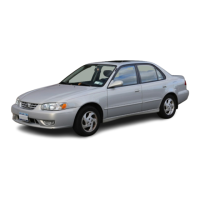
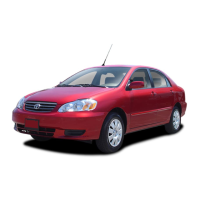
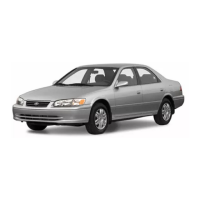
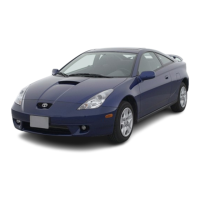
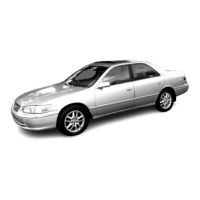
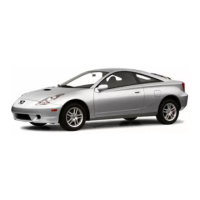
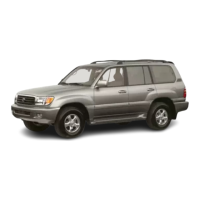
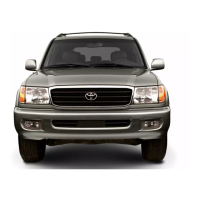
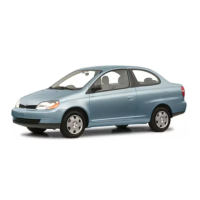
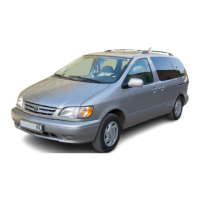
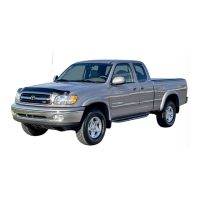
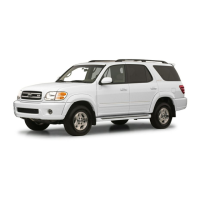
